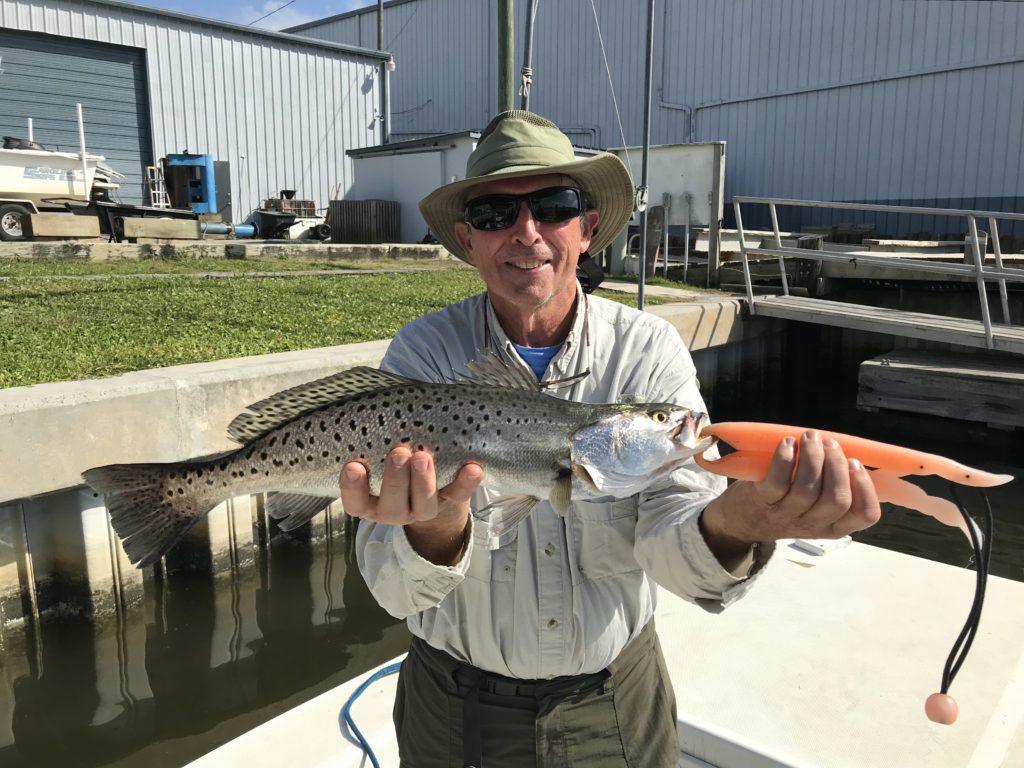Swansboro – December 14, 2017
Rich, of Reel Outdoors, reports that surf fishing has produced good numbers of sea mullet. Anglers have landed plenty of quality fish on cut shrimp. Blowfish, small speckled trout, and red drum are also hanging out in the surf. A mix of cut mullet and shrimp will work for these species.
Inshore, the trout bite remains steady, and anglers have had the most success tossing Gulp soft plastics on jig heads. Working the baits slowly off the bottom has been the key to drawing strikes.
Nearshore, bluefin tuna are starting to make their appearance. Anglers should see these fish from just off the beach to a few miles out. The black sea bass bite has also heated up over nearshore structure and wrecks.
Heading into the winter, the drum bite should pick up in the surf. Anglers walking the beach and targeting sloughs with cut mullet or soft plastics should be able to land a few fish.
Matt, of Pogie’s Fishing Center, reports that those looking for speckled trout have found the most action in local creeks and in the White Oak River. Mud minnows under popping corks and on Carolina rigs, as well as MirrOlure MR17s and MR18s, have worked best.
Those looking for red drum inshore have mostly caught under-slot fish. The majority of these fish have held in the marshes and hit Gulp soft plastics. The larger reds have made their way out into the surf. When fishing around the marsh, flounder have still been around and willing to eat. The 4” Gulp shrimps and 6” Gulp jerk shads have gotten the job done.
Anglers looking for black drum are finding them holding in deeper holes inshore. Dropping cut shrimp on light Carolina rigs has worked best.
Moving into the next few months, look for the speckled trout bite to remain steady. Slowing down your retrieve will yield better results. Red drum will mostly move out into the surf zone, and casting a mix of soft plastics and spoons should tempt them to eat.
Rob, of Sandbar Safari Charters, reports that those looking for redfish have found them in muddy bottom marsh bays, inland creeks, and in the surf. Smaller scented plastics and live mud minnows have worked best, but soaking cut mullet and shrimp on the bottom will work, too.
A few black drum have been mixed in with the reds, and soaking cut shrimp on the bottom has worked best for the black drum.
Those looking for larger speckled trout throughout the winter months should target the narrow and deep sections of creeks and rivers. Suspending baits and mud minnows should do the trick on the bigger trout. Smaller trout will be scattered throughout the marsh until January. That’s when they will follow the bigger fish. When the sun gets up in the sky and warms the water, the bite typically gets better. The jetties and sloughs in the surf should also hold trout until mid-January.
False albacore will provide anglers some steady action through the winter. Targeting nearshore waters on calmer days can produce good numbers of fish, especially when following working birds.

Tony Spangler, of Greensboro, NC, with a 10 lb. 6 oz. sheepshead caught using live shrimp. He was targeting trout in a soundside creek near Emarld Isle.
Johnathan, of On Point Charters, reports that those looking for red drum have found the most action in the surf zone. Wading from the beach or targeting these fish by boat have both proven successful. Casting soft plastics on Fathom Inshore jig heads has worked best.
The speckled trout bite has shifted to the mainland creeks and rivers. The fishing has been off and on, but those willing to put their time in have found a few fish. In the marsh, plenty of small (8-12”) trout have been landed. Not many keepers are in the mix.
Keeper-sized black sea bass have made their way closer to the beach (in the 5-10 mile range). Dropping Spro bucktails tipped with Gulp soft plastics should do the trick.
Heading into the winter, the redfish should feed in the surf until the spring (when they move back inshore). Casting a variety of scented soft plastics will be the best tactic to draw a strike.
The black sea bass bite should also continue to remain steady, and they will move even closer to the beach with cooling water temperatures.

John Frick, of Chapel Hill, with a 24” speckled trout caught jigging a Golden Bream Zoom Fluke in Queens Creek. He was fishing with Capt. Rob Koraly of Sandbar Safari Charters.
Bobby, of Teezher Charters, reports that nearshore fishing has slowed down a bit, but the false albacore are still chewing well. A variety of spinning and fly tackle has fooled the falsies into eating.
A few bluefin tuna have made an appearance off the beach, with a couple of 500 lb. fish landed.
Those looking for the king bite have targeted 65-68 degree water.
Offshore in 100-130′ of water, there are grouper, black sea bass, and triggerfish feeding well on a variety of cut baits.
Out at the Gulf Stream, anglers are still finding some solid action. Blackfin tuna, wahoo, and mahi have all been holding in the warmer water.
As the winter months approach, look for bluefin tuna moving through the area just off the beach. Also, the king and blackfin tuna bite should remain steady, and black sea bass will move in closer to the beach and hold on nearshore structure and ledges.
